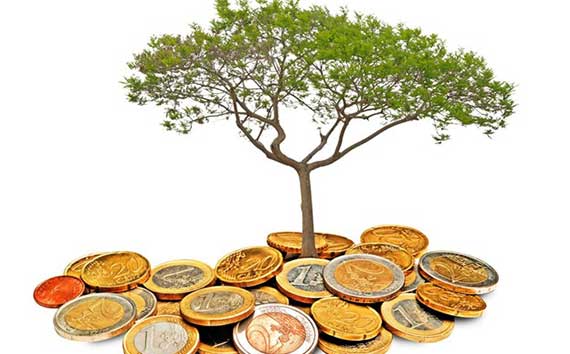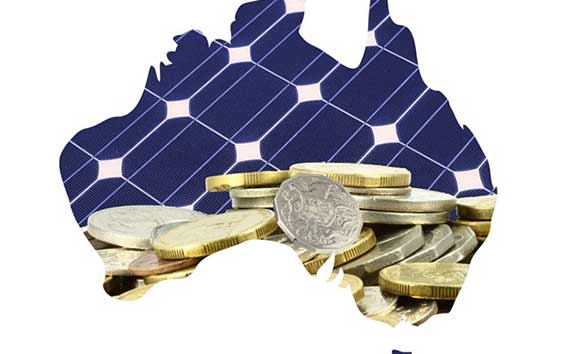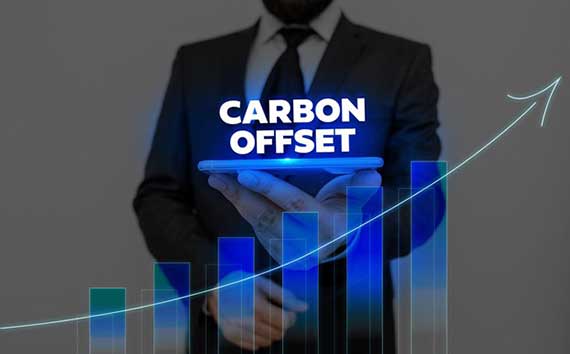Carbon credits provide everyone from consumers to large corporations with the opportunity of reducing their carbon footprint. The credits represent one metric ton of carbon and can be purchased and then retired from the market when the credit owner wants to reduce their carbon footprint.
The act of carbon retirement ensures the legitimacy of carbon offsetting programs and that no carbon credit can be counted twice. This provides an accurate measure of the greenhouse gas quantities offset through carbon credits.
Another form of carbon retirement involves investors buying assets in the fossil fuel industry to retire those carbon-emitting assets sooner than they would be under business-as-usual operations. This process can reduce emissions over time.
To understand the process of carbon retirement, we’ll look into how the carbon market works. First, we’ll cover the two types of carbon markets: the compliance and voluntary markets. Then, we’ll go over how owners of carbon credits can make money off the offsets and how investors can get involved in carbon markets. After that, we’ll look into carbon tax, the cost of offset credits, and the duties carbon brokers perform.
What Is Carbon Credit Retirement?
Carbon retirement is how carbon credits are purchased and removed from a carbon market. Carbon credits can be retired from either the compliance or voluntary markets. The way carbon credits are created, acquired, and ultimately retired varies from the voluntary market to the compliance market.
In both markets, however, the purpose of retiring carbon units is so the credit, equivalent to one ton of CO2 removed from the atmosphere, cannot be used twice, whether by an individual or a business entity. Once the credit is retired from a market, it can no longer be sold or traded. In other words, retiring a carbon credit means it has been purchased, and its value of one ton of CO2 has been reduced from the purchaser’s overall carbon footprint.
Below, we’ll cover how the compliance and voluntary markets work. In addition, we’ll look into a concept that allows voluntary participation within the compliance market.
Carbon Credit Retirement in Compliance Markets
Many business firms worldwide are starting to measure their carbon footprint due to emission regulations that create carbon compliance markets. Examples of compliance markets include the European Union’s Emissions Trading System (EU ETS), the California Cap and Trade Program, and The Regional Greenhouse Gas Initiative. Let’s go over the European Union’s Emissions Trading System to explore precisely how this works.
The EU ETS is a market that works on a cap and trade system in which organizations and businesses within the trading scheme are granted or can purchase emissions allowances, also known as EU allowances, climate credits, or carbon credits. The regulated supply of EU allowances ensures they retain value within the EU ETS. The trading scheme reduces its market cap over time, so overall emission levels fall.
At the end of each year, organizations must provide enough EU allowances to cover all emissions. Once the organization releases these carbon offset credits, they are retired and no longer exist in the market. If an organization does not have enough credits to cover its emissions, it is fined. An organization can keep any abundance of allowances to cover future greenhouse gas emissions, or otherwise, these can be sold to other companies.
Carbon Credit Retirement in Voluntary Markets
The other way carbon credits are retired is through the voluntary market. The voluntary market consists of individuals and businesses who wish to participate in programs that sell carbon offset credits. These credits are created through practices such as wind farms, gas capture, and forestry. One credit is created when one ton of CO2 is removed or prevented from entering the atmosphere.
Individuals or businesses can then purchase these offsets to reduce the emissions attributable to their operations. The money put toward carbon offset credits provides further financial support for green projects. When a carbon offset is purchased, it is retired from the voluntary market. These credits must be retired so they are not counted twice.
This process ensures that the original purchaser of the credit is the only one who receives a reduction in their carbon footprint. Retiring carbon credits protects the integrity of the carbon-offsetting system, so buyers can know their purchases of carbon offset credits is a legitimate form of reducing greenhouse gases.
Voluntary Participation in Compliance Markets
A new method allows voluntary participants to offset their carbon by purchasing and retiring carbon credits from the EU Emissions Trading Scheme. This method creates carbon offsets by reducing big business emissions. Let’s see how this works.
Carbon retirement firms purchase EU allowances for their clients and remove these credits from the trading scheme. Fewer credits in the trading circulation mean more big businesses are forced to reduce their emission levels or otherwise face fines if they do not have enough credits to cover their emissions.
When large, polluting companies covered under the EU ETS are forced to decrease their emissions, an overall reduction in greenhouse gas concentrations will occur. In this manner, individuals and businesses that have volunteered to pay for carbon credits to be purchased and retired can effectively offset their own carbon output by reducing the emissions caused by large, polluting industries.
How Do I Get Paid for Carbon Credits?
There are two ways to get paid for carbon credits. The first is to generate carbon credits through creating and operating an offsetting project. The second is to invest in carbon credits. Let’s cover both to understand how you can get paid for carbon credits.
Generating Carbon Credits
To generate carbon credits, an offsetting project must be created. These projects are designed to capture and destroy greenhouse gases from the atmosphere, to produce clean energy that reduces carbon emissions, and to sequester carbon from the air. These projects include methane gas capture from landfills and farms, wind power, and improved forestry practices.
An offsetting project must meet five criteria for it to be considered environmentally responsible:
- A real project: The project has to be legitimate, and the measurements of greenhouse gases captured must be accurate. This verifies that the project is actually reducing greenhouse gas concentrations in the atmosphere.
- Permanent emission reductions: Once the emissions are captured or prevented from entering the atmosphere, the process should not be reversible. It should not be possible for a re-release of greenhouse gas into the atmosphere in the future.
- Additional emission reductions: The project should lower emissions compared to business-as-usual levels. A project is not considered environmentally responsible if no change to the regular emissions has been made.
- Verifiable: A third party should verify and monitor the project’s credibility.
- Enforceable: The credits created through the project must be accounted for and traceable. The credits usually exist in a registry and are retired once sold.
Once an environmentally responsible offsetting program is created, a third party can verify its legitimacy and ensure it has the legal rights to create the credits. These carbon offset credits can then be sold to individuals and businesses that wish to reduce their carbon footprint. After the carbon offset is purchased, it is retired.
Investing in Carbon Credits
Another option of making money from carbon credits is through investing in them. There are a few options for investing in the carbon credit market.
First, you can choose to invest in carbon credit exchange-traded funds (ETFs). Second, you can opt to invest in individual companies that trade carbon credits. Or, you can keep an eye out for new financial products to come about like the proposed carbon retirement portfolio (CRP). Third, you can invest in carbon credit cryptocurrencies, like the Terrapass Coin (TPSC). Let’s go over each option you have.
- Carbon credit ETFs: Investing in carbon credit exchange-traded funds allows you to make an investment that tracks the state of the carbon market.
- Individual companies: Investing in companies that trade carbon credits will allow you to involve yourself with the carbon market through the companies you choose to invest in. Microsoft, for example, acquired 1.3 million carbon offset credits in 2021 as they pursue their goal of becoming carbon negative. Investing in a company like this is a form of carbon credit investment.
- Carbon retirement portfolio: This is a proposed new concept that could fight climate change. A CRP would present an investing opportunity to lower greenhouse gas production while benefiting buyers, sellers, and governments. It would be a portfolio that holds assets responsible for greenhouse gas emissions, primarily in oil and gas wells and coal power plants. Carbon retirement portfolios would pledge to retire these assets sooner than business-as-usual standards, thereby reducing emission levels.
- Carbon credit cryptocurrency: Coins, like the Terrapass Coin, allow you to invest in carbon credits using the cryptocurrency platform. One Terrapass Coin is equal to one metric ton of carbon offsets. When you purchase a Terrapass Coin, you can hold onto it in your crypto wallet, trade it, gift it, or retire the coin to offset your carbon footprint.
With a handful of options to choose from for investing in carbon credits, investors and companies that support clean energy emission reduction projects both stand to benefit.
How Do I Claim Carbon Credits in Australia?
Australia provides businesses and individuals with the opportunity to earn carbon credits through actions that sequester or reduce carbon emissions. The carbon credits can then be sold to the Australian government in an auction process that allows the holder of the credits to bid on sale contracts. Another option exists in which you can sell the credits to businesses or state governments.
How Do Carbon Credits Work in the U.K.?
In the U.K., verified carbon credits called Woodland Carbon Units can be sold to businesses that wish to offset their emissions. In England, holders of the carbon credits have the option to sell to the government upon verification. Once you find a buyer for your credits, you will receive payment and transfer the carbon credit to the buyer who wishes to offset their emissions. The carbon credit is retired upon transfer, so emission reductions cannot be double-counted.
How Much Money Is a Carbon Credit Worth?
The value of carbon credits can vary greatly depending on what type of project they support and who is selling the credit. The price of an offset credit can fall anywhere between under $1 up to more than $35.
The price of carbon credits fluctuates like any other market with tradable assets. For example, the average carbon credit price in 2019 was about $4.33. In 2020, it went up to $5.60 before falling back to a $4.73 average in 2021.
How Is Carbon Taxed?
A carbon tax is an instance in which a government taxes companies for each metric ton of greenhouse gas released by their business operations. Carbon taxes are meant to disincentivize companies from releasing excessive amounts of carbon. Companies must pay an amount that reflects the actual cost of emissions.
With the help of scientists and economists, governments must decide how much money the tax should be per ton of CO2. The U.S. Interagency Working Group on Social Costs of Carbon came to a figure of $40 per metric ton, while the U.N. proposed taxing between $135 and $5,500 per ton.
Businesses can offset their emission levels by using credits to avoid carbon taxes. Once companies purchase and retire the carbon credits from the market, their carbon emission levels will be reduced, helping them prevent carbon taxes while supporting environmentally sustainable projects.
What Incentives Come With Carbon Retirement Portfolios?
Above, we covered how you could invest in carbon retirement portfolios to make money in the carbon credit retirement market. Along with providing an excellent investment opportunity to reduce greenhouse gas emissions, these accounts could bring about financial benefits for investors. While these types of portfolios are still in the idea phase, let’s cover what incentives might come from these proposed carbon retirement portfolios.
Investors involved in a CRP may benefit from government-provided incentives given to the CRP as a whole, such as a financial bonus for reducing one ton of carbon due to the portfolio retiring high-emission assets. An analysis of oil fields in North Dakota suggests that an incentive of $40-$45 per ton of emissions reduced can offset the value lost from shutting down a well early.
Other incentives might come in the form of lower borrowing costs for investors. These types of incentives would be awarded to the CRP as a whole and increase the overall value of the asset for its investors.
Is Investment Income From Carbon Retirement Portfolios Taxable?
Because the carbon retirement portfolios aren’t official investment vehicles yet, there aren’t any rulings on how they might be taxed. However, it’s likely that investors would have to pay taxes on their investment income associated with carbon retirement portfolios. This income would probably be treated like any other investment income.
Tax laws are constantly changing, and if you have any questions about your investment income, it is best to speak with a financial and tax advisor.
What Does a Carbon Broker Do?
A carbon broker works with individuals or companies who wish to get involved with carbon offsetting. Brokers are professionals in their field and seek to provide their clients with the best opportunities for participating in carbon markets. They will work with individuals and businesses to develop a carbon-offsetting strategy that works best for them.
Retire Carbon Offsets for a Green Earth
Retiring carbon offsets allows businesses and individuals to reduce their carbon footprint and make a difference in the fight against climate change. The procedure of carbon retirement allows the carbon-offsetting market to be regulated while protecting the integrity of offsetting practices.
Carbon retirement accounts work to retire carbon-emitting assets sooner than normal and help to reduce emissions faster. Participating in carbon retirement is an excellent way to get involved in protecting planet Earth.
If you’re interested in investing in carbon credits today, be sure to look into the Terrapass Coin.
Brought to you by terrapass.com
Featured image:












